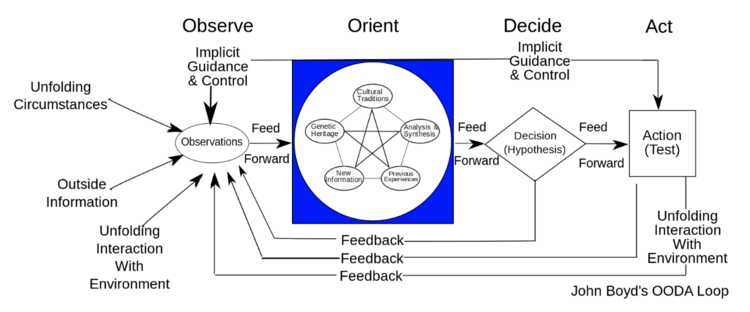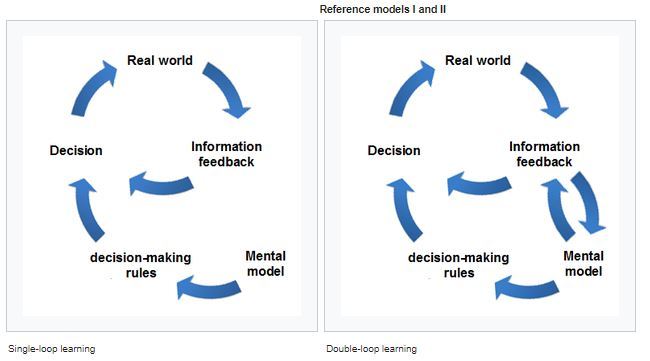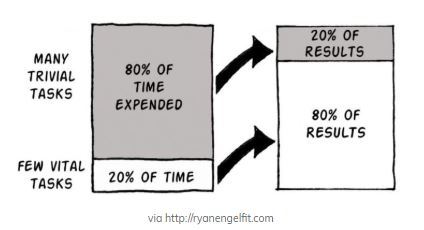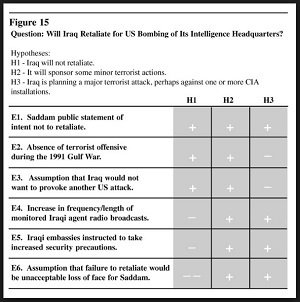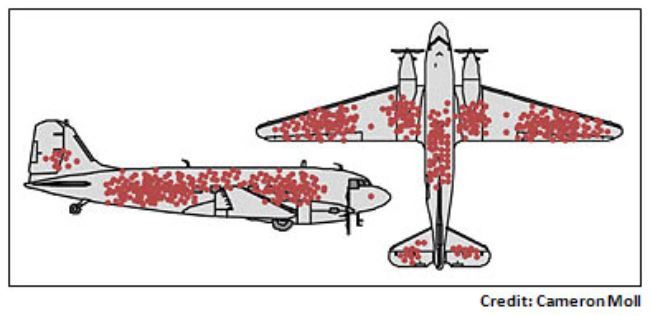As humans, we typically operate on cognitive autopilot. We rarely stop and reflect on how we interpret information and create mental models which replicate our perception of reality.
But when our mental models fail to match reality, we simply ignore reality and operate throughout the day on implicit assumptions. These are not conscious choices. Our mental models allow us a simple way to cope with reality, yet we fail to confront reality when it is different than our mental model. Essentially, we have unknowingly created a ready-made default mechanism.
So, what can we do?
We must first take time to reflect on our critical thinking skills. By simply understanding how you interpret and perceive information differently than everyone else is a great first step. To truly upgrade your critical thinking skills, you must examine how thoughts arise in your mind and how they got there.
Critical thinking is about asking yourself how you make choices. We can choose to believe something we hear or see; however, why do we choose to believe something we hear or see?
As a Red Team Member in the U.S. Army, I will explain how I upgrade my critical thinking skills using Colonel John Boyd’s OODA Loop as a framework for critical thinking. I will then demonstrate practical ways to upgrade your critical thinking skills for a sharper mind using tools and techniques from the University of Foreign Military and Cultural Studies (UFMCS) Center for Applied Critical Thinking (also known as the Red Team school) and The Applied Critical Thinking Handbook (also known as The Red Team Handbook).
Table of Contents
What Is Critical Thinking?
Critical thinking can be explained in a number of ways. Let’s quickly examine a few definitions:
- “Critical thinking is a process, the goal of which is to make reasonable decisions about what to believe and what to do.” – Robert Enis
- “Critical thinking means developing an ever better worldview and using it well in all aspects of your life. The essence of critical thinking is questioning and arguing logically.” – Gary Jason
- “Critical thinking is searching for hidden assumptions, noticing various facets, unraveling different strands, and evaluating what is most significant. It implies conscious, deliberate inquiry, and especially it implies adopting a skeptical state of mind.” – Sylvan Barnet and Hugo Bedau
To me, critical thinking is as follows:
“Critical thinking is observing the world with an open and skeptical mindset with the goal of exploring all alternatives objectively (as much as possible). It is our ability to orient our mental models to view reality through an emotionless lens seeking the truth by questioning our own assumptions and deconstructing arguments logically. It is our ability to identify gaps and uncover what is missing to improve our quality of decisions. Finally, it is our ability to unravel different strands of significant information through a continuous stream of feedback so that we continuously destroy and create new mental models allowing us to act closer to reality.” – Dr. Jamie Schwandt
Critical Thinking Framework: OODA Loop
I use John Boyd’s OODA Loop as a framework for critical thinking. It is similar to Swarm Intelligence, where we use simple rules to allow the collective intelligence to emerge. The simple rules are Observe, Orient, Decide, and Act.
The OODA Loop is a high-speed decision making and feedback process in four stages: Observe, Orient, Decide, and Act.[1] The OODA Loop is a continuous feedback loop where the objective is to go through the loop faster than your opponent.
I use simple rules provided within the OODA Loop to assist me in speeding up my critical and creative thinking abilities. However, do not confuse the word “simple” with “simplistic” as the OODA Loop uses simple rules within a complex system (which is exactly what the OODA Loop is).
The key to the loop is feedback. The OODA Loop is similar to Double-Loop Learning, where the goal is to modify decision-making in light of new experience.
Double-Loop Learning is the first loop uses goals or decision making rules, the second loop enables their modification… hence, double-loop.[2]
Chris Argyris writes about Double-Loop Learning in Teaching Smart People How To Learn,
“A thermostat that automatically turns on the heat whenever the temperature in a room drops below 68 degree is a good example of single-loop learning. A thermostat that could ask why am I set to 68 degree? and then explore whether or not some other temperature might more economically achieve the goal of heating the room would be engaged in double-loop learning.
The overarching guide for my use of the OODA Loop is as follows:
Scout Mindset
I will talk about this more in the How-To Guide: Tools to Apply the Critical Thinker’s OODA Loop section below.
Objectivity
It’s about seeking truth. Here we should seek to follow a concept introduced by Immanuel Kant as a way of evaluating motivations for actions – called the Categorical Imperative. Kant defines a categorical imperative as an absolute or an unconditional requirement that must be obeyed in all circumstances and is justified as an end in itself. For example, “Act only according to the maxim whereby you can, at the same time, will that it should become a universal law.” For more information, visit the Categorical Imperative.
Avoid Emotion
Imagine you can physically remove yourself from your body and objectively view how you make decisions. It’s like pulling your mind from your body.
Reasoning Backwards
This is essentially solving problems by working backwards. A simple example of this method is working backwards to solve a math problem.
For example, solve the following problem: “I think of a number and add three to it, multiply the result by 2, subtract 4 and divide by 7. The number I end up with is 2. What was the number I first thought of?” To solve, read the problem backwards. You start with: 2 x 7 = 14. Then take 14 + 4 = 18. From there take 18 / 2 = 9. Then take 9 – 3 = 6. Finally, the number you first thought of was 6.
Moreover, Reasoning Backwards can be viewed through the lens of deduction. I prefer deduction over induction and here is why:
An example of Inductive Reasoning is: this raven is black, that raven is black, all ravens are black.
Deductive Reasoning is: All ravens are black, that raven is black, therefore it is black.
We make deductions from laws to see what should happen and then experiment to see if our prediction was right. Think about it this way… to test whether a burner is hot, we must touch the burner first using Inductive Reasoning; however, if we were to use Deductive Reasoning, we would first predict the burner to be hot and would realize there is not need to touch it.
One last benefit of Reasoning Backwards is that it forces our linear and logical mind to catch things we wouldn’t normally catch. For example, read the following sentence:
After reading this sentence, you will realize that the the brain doesn’t recognize a second ‘the’.
Now read the sentence again, this time read it backwards. Did you notice that you missed the second ‘the’?
Think-Write-Share
The UFMCS uses this as the single most important idea to enable critical thinking. For example, prior to taking on an issue, we should first think independently and reflectively, then write down our thoughts (which assists us in shaping and refining them), then share them in a disciplined manner. This takes us from divergence to convergence.
Dialectical Method
Boyd described a thought experiment in a presentation called Strategic Game of ? and ?. Through the process of Destructive Deduction (analyze and pull apart mental concepts into discrete parts) and Creative Induction (using these elements to form new mental concepts) we can create a new mental model that more closely aligns with reality.
Part 1 of his question:
“Imagine that you are on a ski slope with other skiers…that you are in Florida riding in an outboard motorboat, maybe even towing water-skiers. Imagine that you are riding a bicycle on a nice spring day. Imagine that you are a parent taking your son to a department store and that you notice he is fascinated by the toy tractors or tanks with rubber caterpillar treads.”
Part 2:
“Now imagine that you pull the skis off but you are still on the ski slope. Imagine also that you remove the outboard motor from the motorboat, and you are no longer in Florida. And from the bicycle you remove the handle-bar and discard the rest of the bike. Finally, you take off the rubber treads from the toy tractor or tanks. This leaves only the following separate pieces: skis, outboard motor, handlebars and rubber treads.”
What do you imagine could be created using the remaining parts? A Snowmobile
Let’s now turn our attention to the four simple rules within the OODA Loop.
The Critical Thinker’s OODA Loop: Simple Rules to Guide You
Observe
Think of how we use sensors and gather information. In an ant colony, this is where ants shoot pheromones to signal others when they have found food.
Here we are detecting events within our environment and identifying change (or lack thereof). This could also be identified as Locate or Perceive (think swarming tactics or artificial intelligence).
Steps:
- Find out what is really there.
- Observe first and gather data.
- Identify the uncommon and common things. As Sherlock Holmes famously said, “What is out of common is a guide.” A great video on this point is The most unlikely threat from the hit movie Men in Black – watch the following video:
- Begin with a blank and open mind.
- Remember that there is nothing more deceptive than an obvious fact.
Key questions to ask:
- What happened?
- What are we being asked?
- What do we know?
Key tools to use:
- 6 Words. This is simply writing a short and precise phrase summarizing your thinking into a set number of words.
- Think-Write-Share (see above)
- Outside-in thinking
- Key assumptions check. We all start with assumptions and it is extremely important to be aware of our own. Understanding this will allow us to explain the logic of an argument and expose faulty logic. It will also help us simulate thinking about a problem and uncover hidden links between factors. Let’s examine some key questions to ask here: 1) How much confidence do you have with this assumption?; 2) What explains your confidence with this assumption?; 3) What must exist for this assumption to be valid?; and 4) If this assumption proves wrong, will this change your line of thinking about the issue?
- Complex Grammatical Structures
Orient
Think of a construction site where destruction (analysis) and creation (synthesis) take place.
John Boyd identified orientation as our way to survive and grow within a complex and ever changing world. This could also be identified as Converge or Understand.
Steps:
- Identify your biases and know how they impact decision making.
- Be aware of your worldview and how it shapes the world you see.
- Be aware of multiple perspectives and not just your own.
- Place new observations in context with older observations.
- Reason carefully. Find out what others cannot.
- Determine what is vital (think of the Pareto Principle).
- Seek out what’s NOT right in front of you (determine what’s missing).
- Remember what Sherlock Holmes said, “Never make exceptions. An exception disproves the rule.”
- Think in terms of metaphors and analogies.
Key questions to ask:
- Where are the pattern of bullet holes NOT located?
- Why?
- What are we missing?
- Where are the gaps?
- What are the relationships?
- What are the different perspectives?
Key tools to use:
- Read sentences and/or paragraphs backwards. (see above)
- Systems Thinking – see Systems Thinking V2.0.
- Pareto Principle and 5-Why
- Argument Deconstruction (see below).
- 4 Ways of Seeing. This is a powerful tool for looking at multiple perspectives.
- Dialectical Method (thesis, antithesis, synthesis)
- Analysis + Synthesis. By breaking a concept or problem apart (analysis) we develop knowledge; yet, it’s when we piece the parts back together (synthesis) and create something new that we develop understanding or wisdom.
- Onion Model. Hofstede’s Onion Model is a great tool to find values at the core. It is a great way to prompt better questions, look at something or someone or some group from multiple perspectives, and expose ignorance.
- neXt – Innovative Framework. Professor Ramesh Raskar, head of MIT Media Lab’s Camera Culture Research Group, created an easy-to-use framework for inventing the future – right now. Watch the following video:
Decide
Think of a hypothesis like you would when putting a puzzle together, where you are making predictions then testing those predictions.
Here we are to decide among alternatives generated in the orientation phase. This could be identified as Attack or Predict.
Steps:
- Identify and select your next action based on orientation and local knowledge.
- Find the dog who isn’t barking (see below in the How-to guide: Tools to apply the critical thinker’s OODA Loop section).
- Determine what would have to exist for something to be true.
- Think like Sherlock Holmes – eliminate the impossible so that what remains (however improbable) is the truth.
- Think like a detective – piece out what is key evidence verses artifact (not important).
- Try to prove the opposite (Devil’s Advocacy Red Team tool).
Key questions to ask:
- What evidence is not being seen for the hypothesis to be true?
- Where are the pattern of bullet holes not located?
- What is vital evidence and what is simply an artifact (which will get you stuck in the wrong rabbit hole)?
- Where is the dog who isn’t barking?
Key tools to use:
- Algorithmic Thinking (IF – AND – THEN).
- Cynefin Framework
- Lean Six Sigma
- Devils Advocacy. Here you are trying to prove the opposite and disprove the hypothesis. Essentially, you are trying to prove the limitations.
- Alternative Futures Analysis
- Analysis of Competing Hypotheses (ACH) (see below)
- The Value of Possible. Here is a logical system incorporating elements of language. In this method, we have three truth values: False, True, and Possible. Logical connective rules: True is p, Possible is q, and False has no value. This allows for something to be fuzzy (not clearly black or white… true or false) but could still be true.
Act
Think of testing and retesting a hypothesis.
According to Boyd, actions should be rapid, surprising, ambiguous, and ever changing. This could be identified as Disperse or Learn.
Steps:
- Carry out your decision (or selected action) while the opponent is still observing the last action.[3]
- Present your information in simple ways. For example, use SEE-I and What? – So What? – Now What? to describe your situation/problem/scenario.
- As Sherlock Holmes said, “Nothing clears up a case so much as stating it to another person.”
- Develop quick “fly-like” reactions.
- Use simple rules to guide your actions or the actions of a group.
- Find the desired path. For example, watch how routes on a college campus naturally form. Wouldn’t it be interesting if we allowed these to naturally form then simply pave those locations. For more on this idea, watch the following video Find and Pave the Desired Path:
Key questions to ask:
- What did I learn?
- What type of feedback did I receive?
- What type of feedback am I still receiving (we are continuously receiving feedback)?
- What can I do with this new information as my OODA Loop begins again?
Key tools to use:
- Think-Write-Share (see above)
- Journaling
- Cantor’s Set Theory.
How to Apply the Critical Thinker’s OODA Loop
1. Argument Deconstruction
The UFMCS provides a powerful framework for deconstructing an argument.
The method:
- What is the argument? Here the argument = problem (or premise) + reasons + conclusion
- Check to make sure the right problem is identified and examine the point of view of the other person.
- Search for and ask for clarification of ambiguous words.
- Look for value conflicts and check key assumptions. More specifically, look for prescriptive assumptions (statement made on the way things should be) and descriptive assumptions (statement made on the way things are).
- Look for logical fallacies.
- Is the person using a heuristic or rule of thumb?
- Check the evidence provided. Does the person use personal experience, potentially deceptive statistics (use numbers without percentages – percentages without numbers), appeal to authorities, faulty analogies, intuition, etc.
- Is there another plausible hypotheses which might explain the situation?
- Are there any other conclusions you can draw from the argument?
- What implications does accepting the argument pose?
2. The 4 Agreements
Another great way the U.S. Army Red Team community upgrades their critical thinking ability is through the following four agreements:
- Don’t make assumptions.
- Don’t take anything personal.
- Be impeccable with your words.
- Always do your best.
Finally, I recommend using the following mnemonic. I created this tool to assist me as I move through the Critical Thinker’s OODA Loop. Additionally, I recommend writing this down on a note-card and keeping a copy with you at all times.
3. SDWFAP
Scouting
Think like a Scout – the drive to see what’s really there.
In the following video Why you think you’re right-even if you’re wrong, Julia Galef examines the motivation between two mindsets (Scout mindset vs Soldier mindset) and how they shape the way we interpret information:
Galef explains that Scouts are curious and are more likely to feel pleasure when they learn new information. She says it’s like an itch to solve a puzzle. We should strive to develop a Scout Mindset. Let’s examine qualities Scout’s possess:
- The Scout’s job is not to attack or defend, but to understand – to go out, map the terrain and identify potential obstacles.
- Scout’s are intrigued when they encounter something that contradicts their expectations.
- More likely to think it’s virtuous to test your own beliefs.
- They do not say someone is weak for simply changing their mind.
- They are grounded; meaning their self-worth isn’t tied to how right or wrong they are about an argument.
- They are proud (and not ashamed) when they notice they might be wrong about something.
- They are intrigued (and not defensive) when they encounter information that contradicts their beliefs.
- They yearn not to defend their beliefs, but to see the world as clearly as they possibly can.
- Above all, the Scout seeks to know what’s really there.
Dog
Find the Dog who isn’t barking.
In Arthur Conan Doyle’s Sherlock Holmes story Silver Blaze, we are presented with a mystery of the disappearance of a famous racehorse the night prior to a race and the murder of the horse’s trainer. Mike Skotnicki describes the story about The Dog that Didn’t Bark:
“The dog that didn’t bark. What we can learn from Sir Arthur Conan Doyle about using the absence of expected facts.” – Mike Skotnicki
Sherlock Holmes solves the mystery in part by recognizing that no one he spoke to in his investigation remarked that they had heard barking from the watchdog during the night.
Gregory (Scotland Yard detective), “Is there any other point to which you would wish to draw my attention?”
Sherlock Holmes, “To the curious incident of the dog in the night-time.”
Gregory, “The dog did nothing in the night-time.”
Sherlock Holmes, “That was the curious incident.”
The fact that the dog did not bark when we would have expected it to while the horse was stolen led Holmes to the conclusion that the criminal was not a stranger to the dog, but someone the dog recognized; thus, would not cause the dog to bark.
Was
What would have to exist for something to be true?
Here we can use a UFMCS Red Team tool called What If? Analysis. This tool assumes an event has already happened with potential impact (positive or negative) and explains how it might play out. This is a powerful technique for challenging a closed mindset by shifting the focus from whether an event could occur to how it might happen.
The method:
- Clearly state the conventional line assuming the event has happened, then step back and consider what alternative outcomes are too important to dismiss, even if unlikely.
- Select triggering events that allowed the event to happen.
- Develop a chain of argumentation.
- Reason backwards from the event in concrete ways (specify what must occur at each stage).
- Choose one or more plausible pathways.
- Develop and monitor a list of indicators or observables for each scenario that would assist in detecting the beginning of the event.
Another technique you can use here is The Reductio ad Absurdum. This is a simple yet powerful tool.
The method:
- Assume a statement to be true and see what conclusions you can discern from it. If you find you get a contradiction, you know the initial statement is false as contradictions are always false.
- It allows you to determine if a statement is false by showing the contradiction.
For more on this technique, I recommend reading Logic: A Graphic Guide.
Frightened
What’s not right in Front of us?
Here we can use a combination of tools and techniques.
For example, if you have a team or group of people, you could use what’s called a Premortem and/or Postmortem Analysis. This is an application of mental stimulation and is a great tool for Group Think Mitigation. We could use the 5-Why technique after we have asked what happened. We could also use Algorithmic Thinking where we perform an If-And-Then series of questions.
Let’s combine the three and see how this can be used:
- Assume an event has happened or after an event has happened – use 5-Why to identify causes as to why this event happened.
- Generate a list of reasons for the event with the following simple rules: 1) The more ideas the better; 2) Build on other peoples ideas using them as prompts for your own; 3) Wacky ideas are fine (and sometimes preferred).
- Ask a series of If-And-Then questions:
- IF an Active Shooter is spotted AND appropriate signals are in place THEN we should be able to act/respond quicker.
- This can also be used with Propositional Calculus. For example, “If you are a bird, then you have wings,” could be rephrased as, “You cannot be a bird and not have wings.” It is a proposition using one connective such as: IF-Then. It can then be transformed into an expression using the other connectives “and” and “not” without changing the validity of the statement.
At
Ask what evidence is not being seen, but would be expected for a hypothesis to be true.
Conduct an Analysis of Competing Hypotheses (ACH). The objective is to identify alternative explanations (hypotheses) and evaluate the evidence that will disconfirm rather than confirm the hypotheses. This is how I reason backwards.
The method:
- Brainstorm and list all possible hypotheses (no matter how improbable they may seem). List the hypotheses first then the evidence (think deductive reasoning). You can list the evidence first, then the hypotheses if you prefer (think inductive reasoning).
- List all significant evidence and arguments relevant to each hypotheses.
- Reason backwards by creating a divergent systems diagram with each hypotheses from right to left (to mimic backwards reasoning)
- Start to converge by preparing a matrix listing the hypotheses across the top with each piece of evidence down the side.
- Determine if each piece of evidence is consistent, inconsistent, or non applicable.
- Refine the matrix by reconsidering each hypotheses. Here you can even add new information if applicable.
- Focus on disproving each hypotheses rather than proving one. Tally your evidence that are inconsistent and consistent to see which hypotheses are the weakest and strongest (you can also identify this using your systems diagram… +/- for strong and weak connections).
- Ask what evidence is not being seen, but would be expected for a given hypotheses to be true. Ask if denial and/or deception is a possibility.
- Identify and monitor indicators that would be consistent and inconsistent with each hypotheses.
A good example of ACH can be found at the Central Intelligence Agency (CIA).
Patterns
Where are the Pattern (or location) of bullet holes NOT located?
Statistician Abraham Wald was tasked with helping the Allies decide where to add armor to bombers during World War II.[4] The Allies hoped extra protection would help minimize bomber losses due to enemy anti-aircraft fire. They thought the answer was obvious and the bombers returning from missions showed them where to put the extra armor. However, Wald disagreed. He explained the damage actually revealed the locations that needed the least additional armor. In essence, it’s where the bombers could be hit and still survive the flight home.
This is an example of selection or survivorship bias, where we typically only consider information that’s presented to us and ignore information that is absent, yet might just be significantly relevant. For example, the locations on the bombers without bullet holes might just be the location to reinforce.
Finally, we should be extremely carefully of what we remove from a system or process. We have to be aware of the second and third order effects.
I will leave you with one final video: How Wolves Change Rivers:
More Resources About Boosting Brain Power
- 11 Tactics on Increasing Brain Power, Memory, and Motivation
- How to Increase Brain Power, Boost Memory and Become 10X Smarter
- Creative Problem Solving: Create Meaning from Contradictory Ideas
- 30 Tips to Rejuvenate Your Creativity
Featured photo credit: Unsplash via unsplash.com
Reference
| [1] | ^ | Frans P.B. Osinga: Science, Strategy and War |
| [2] | ^ | Wikipedia: Double-loop learning |
| [3] | ^ | Ahmad Shehabat and Teodor Mitew: Distributed Swarming and Stigmergic Effects on ISIS Networks OODA Loop Model |
| [4] | ^ | Seeking Alpha: How Survivorship Bias Distorts Reality |

